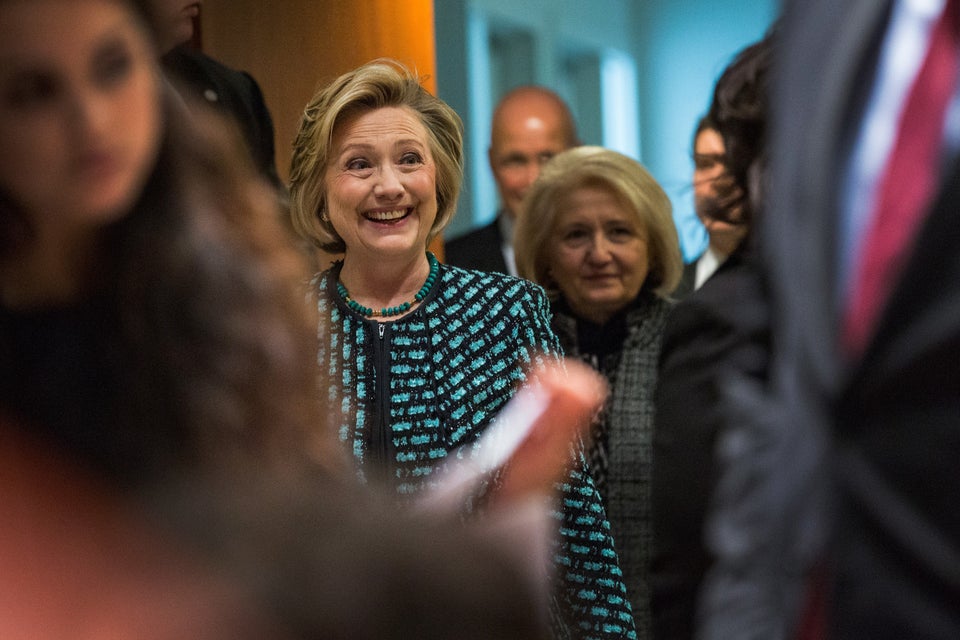A man stands in a field in Iowa. His name is Peter. Peter is standing in a field because there are "200 other reporters" standing in that field. Those "200 other reporters" are observing an event. The event is called the "Harkin Steak Fry." Peter is observing those "200 other reporters" observing the "Harkin Steak Fry." For Peter, these meta-observations are the event.
The intrinsic nature of the Harkin steak fry changes because it is being observed by 200 other reporters. Otherwise, it would just be a bunch of people, cooking steaks in a field. By dint of the fact that 200 other reporters are witnessing the steak fry, the value of the steak fry increases. It becomes the Harkin Steak Fry, with capital letters and such.
The people staging the Steak Fry and the reporters observing the Steak Fry have entered into a tacit agreement, in which their presence turns the act of cooking steaks in a field into a significant, politically charged event. The steaks being fried are, therefore, not steaks in the conventional sense. Rather, the steaks are a distribution mechanism for political content. The reporters observing the event will ingest this content. They will not, however, ingest any steaks. This is one of the many central ironies of this event.
Another irony: the steaks are not being fried, they are being grilled. But everyone has agreed to the fiction that this steak fry, which is not a steak fry, is a Steak Fry.
Peter observes the reporters observing the Steak Fry. By observing the reporters, he changes the nature of the reporters. The reporters become a "madcap media mob." They might not have become a "madcap media mob" had Peter not been on hand to observe them and assign this value to them.
To wit: Peter observes one reporter getting "whacked in the head with the butt of a big television camera." He sees that a "photographer dramatically toppled off his ladder while straining to get a shot." Peter deems this to be "a little absurd." This is, in a Platonic sense, absurd, because neither of these accidents would have happened had the 200 reporters assembled in the field not been there, assembled, in that field. However, the nature of these accidents might never have been deemed absurd, despite their intrinsic absurdity, had Peter not been there to observe them, and deem them as such.
The reporters, however, are assembled in that field because there is a candidate, also in that field, participating in the Steak Fry. Her name is Hillary. Hillary is running for president. Hillary is also not yet running for president. Hillary currently exists in a constant state of simultaneously running, and not running, for president.
Hillary is observed cooking a steak at the Steak Fry. However, according to those observing the event, the steak that Hillary is observed cooking is actually already cooked. That steak lives forever, in a constant state of being cooked, and simultaneously not being cooked, by Hillary. The person who actually cooked the steak, having not been observed cooking the steak, is erased in favor of a person who did not cook the steak.
Peter ponders whether or not the event he is observing 200 reporters observe is being observed by other people. In so doing, Peter questions whether or not the event he is observing 200 reporters observe has the intrinsic value he'd previous assigned to it by participating in the observation of the observers. Peter says, "I joined more than 200 other reporters who swarmed the scene and tweeted away, even though most Americans on social media that day probably cared more about Robert Griffin's ankle."
Robert Griffin, also known as "RG3," is a football player in the National Football League. While Peter is observing the people observing the Steak Fry, other people are observing Robert Griffin's body slowly breaking down. The slow dissolution of Robert Griffin's body is in most ways not distinct from the slow dissolution of anyone's body. However, as thousands of people are observing Robert Griffin's frail flesh give way to the depredations of time, wear and mortality, the nature of Robert Griffin's slow disintegration is changed. Indeed, the destruction of Robert Griffin's body will prove to be far more lucrative for Robert Griffin than will the destruction of many other people's bodies.
Peter becomes aware that other people are observing the reporters observing the Steak Fry, from an even further vantage point than Peter. Peter describes these other people as "politicos and press critics," who "[point] to the event as another example of lazy 'pack journalism' with little journalistic upside." These observers have changed the value of the event being observed once again, by diminishing it. Peter describes these observations like so:
The sniping had some credibility. What was the competitive advantage of being there, just one more reporter among the herd, all of us racing around to get the same quotes and the same pictures?
This was especially true for the many journalists in attendance who rarely travel outside of Washington or New York to cover politics but decided to open up their travel budget for this one trip.
Couldn't their time have been better spent reporting on an undercovered Senate or governor's race in some other part of the country, far away from the rest of the media scrum? Of course, the academics would say. But the incentive structure of today's click-driven news economy begs to differ. Hillary gets eyeballs. Arkansas' Tom Cotton does not. This is the world we live in.
Peter now finds himself in an existential crisis. Previously, his observations of the people observing the Steak Fry had value, because his observations were unique. However, Peter now understands that his observations, having been simultaneously made by many other people, are actually rather quotidian. As the presumed sui generis nature of his observations were the precipitating event in recording them in the first place, he now finds himself in a quandary of his own design, having allowed himself to acknowledge and observe the similar observations of other observers.
He begins to question whether his previous observations, which aligned themselves with these "politicos and press critics," are as valid as he once thought they were. He concludes that they are not, and switches his alignment to the "200 other reporters," previously deemed to be "a little absurd":
As much as I believe in straying far, far away from the rest of the media pack -- this was a lynchpin argument in "Did Twitter Kill The Boys on the Bus?," the Harvard Kennedy School study I wrote last year about the hyperactive political news media -- I did find value in covering the Steak Fry.
The central irony is that Peter had previously found value in covering the Steak Fry by observing that there was no value in covering the Steak Fry. Of course, that's an inescapable contradiction. The logic cannot hold. Thus, Peter erases himself.
I observe all of this and present all of these ideas using a coy parody of post-structuralist literary meta-fiction. By using this cheap device, I present the contradictory nature of this exercise -- in which I mock something for lacking value while assigning it value by spending all of this time writing about it -- while simultaneously dodging responsibility for it. I then disclose the nature of this trick to the people reading it. I erase myself.
You probably feel that none of this has been worth your time. You probably feel cheated.
Here is a story about a woman named Jen. Like many women, she has a butt. Unlike many women, her butt is observed by thousands of people. Their observations change the nature and value of her butt. Perhaps you'll like this story more. There is a butt in it, after all.
[Would you like to follow me on Twitter? Because why not?]

